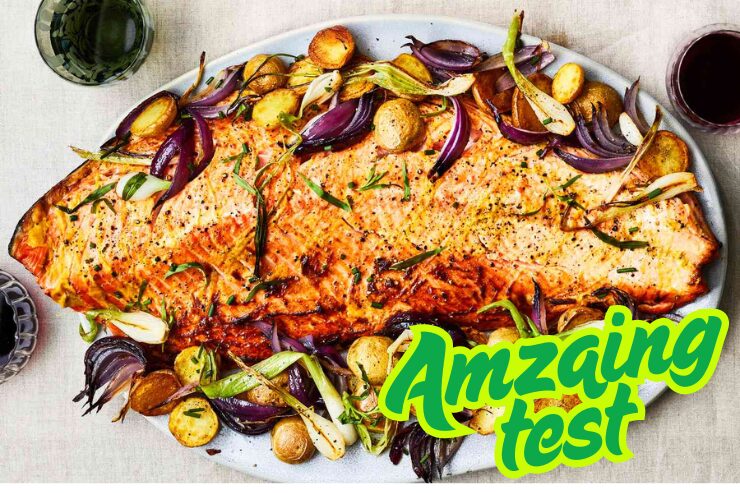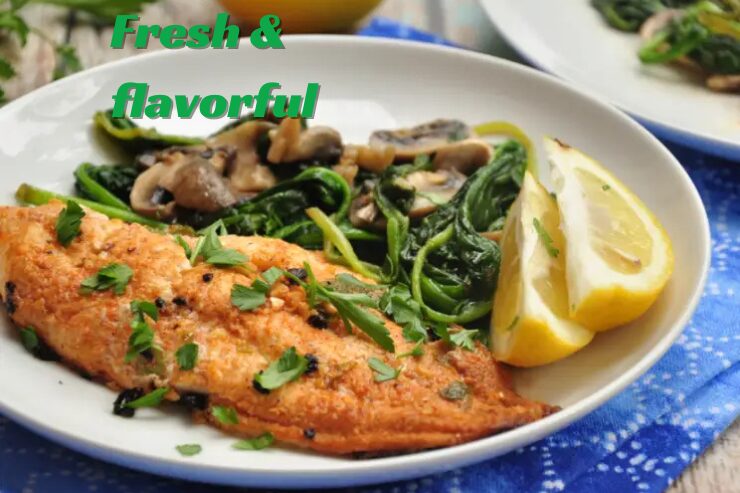Fish Food Recipe
So, you’ve got fish. Maybe a majestic betta, a school of vibrant guppies, or a tank full of goldfish that stare at you like you owe them rent. Feeding them flakes from a box is easy, but if you want your aquatic friends to be healthy, active, and bursting with color, you might want to level up. Enter the ultimate Fish Food Recipe! 🌟
In this article, we’re diving deep into the world of homemade fish food. It’s not rocket science (unless your fish are from Area 51). With the right ingredients, you can make a nutritious, color-enhancing, and immune-boosting food your fish will literally flip for. Let’s get swimming! 🐠
Why Homemade Fish Food?
Store-bought food is convenient, but:
- It often contains fillers (a.k.a. fishy fast food).
- Nutritional value can degrade over time.
- It may not meet the specific needs of your fish species.
Homemade food, on the other hand:
- Is fresh and chemical-free
- Can be customized
- Improves health and coloration
- Makes you feel like a fish chef (Michelin star not included) 😉

Understanding Fish Nutrition
Fish, like humans (except with gills), need a balanced diet:
- Proteins for growth and repair
- Fats for energy
- Carbohydrates (in moderation)
- Vitamins & Minerals for immunity and color
- Fiber to keep their little bellies happy
Different fish have different needs:
- Carnivores need more protein.
- Herbivores prefer veggies.
- Omnivores want the buffet.
Knowing your fish’s diet is the first step to crafting the best fish food recipe.
Ingredients for the Best Fish Food Recipe
Here’s what you need to get started:
Proteins:
- Shrimp (fresh or frozen)
- Fish fillet (white fish is ideal)
- Boiled egg yolk (great for fry)
- Bloodworms or daphnia (live or frozen)
Veggies:
- Spinach or kale (blanched)
- Carrots (grated)
- Peas (de-shelled and mashed)
- Zucchini (softened)
Binders & Base:
- Unflavored gelatin (keeps it solid)
- Spirulina powder (color booster)
- Garlic (boosts immunity)
- Fish oil (for omega-3s)
Extras (optional but fun):
- Paprika (for red color enhancement)
- Vitamin drops (aquarium-safe)
- Algae wafers (crushed)
Note: Don’t throw in chili flakes or chocolate chips. Your fish aren’t on MasterChef. 🤡

Step-by-Step Fish Food Recipe
1. Prep the Ingredients
- Boil or steam the veggies until soft.
- Cook the proteins (except live/frozen worms).
- Blend everything into a smooth paste.
2. Mix in the Gelatin
- Prepare the gelatin according to the package.
- Combine it with the blended mix while warm.
3. Pour and Set
- Pour the mixture into a flat tray or mold.
- Refrigerate until firm (not freezer, this ain’t a popsicle 🥶).
4. Cut and Store
- Cut into bite-sized cubes.
- Store in an airtight container in the fridge for a week or freeze for longer.
Feeding Time! 🚀
- Only feed as much as your fish can eat in 2-3 minutes.
- Remove uneaten food to avoid tank pollution.
- Observe how your fish respond (and yes, they do have preferences!).
Results You Can Expect
After a couple of weeks on this delicious homemade blend, you’ll likely see:
- Brighter colors
- More energy (zoomies in the tank)
- Improved fin health
- Clearer eyes and smoother scales
Some owners even claim their fish started winking. (Okay, maybe not.) 😜
Tips and Tricks 🤖
- Make small batches to ensure freshness.
- Rotate ingredients weekly to prevent boredom.
- Avoid oily or spicy foods.
- Use a garlic press for better mixing.
- Freeze in an ice cube tray for portion control.
Funny Fishy Moments
- That moment when your guppy tries to carry off a chunk twice its size 😂
- When your betta gives you side-eye for using too much spinach.
- Your goldfish becoming a food critic: “Hmm… needs more shrimp.”
Who knew fish were so dramatic? 🎤

Fish Food Recipe Variations
For Fry (baby fish):
- Blend boiled egg yolk, spirulina, and powdered flakes
- Very soft texture
For Herbivores:
- More greens, less protein
- Add seaweed or algae
For Carnivores:
- High-protein mix
- Add cut-up worms or fish
Frequently Asked Questions
Q1: Can I feed this to all fish? A: Mostly yes, but tailor the mix for carnivores/herbivores accordingly.
Q2: How long can I store homemade fish food? A: 1 week in the fridge, 3 months in the freezer.
Q3: My fish aren’t eating it. Why? A: They may need time to adjust. Try smaller pieces and mix with familiar food.
Q4: Is gelatin safe for fish? A: Yes, unflavored food-grade gelatin is perfectly safe.
Q5: Can I use human vitamins? A: No! Only use aquarium-safe vitamins. You don’t want a fish on a caffeine buzz. ☕️
Conclusion
Creating your own fish food recipe isn’t just a fun kitchen experiment; it’s an act of love. Your fish deserve better than dusty flakes from a mystery jar. With just a few ingredients, you can boost their health, enhance their color, and maybe even win their tiny, silent approval.
So roll up your sleeves, blend some shrimp with spinach, and feed your aquatic buddies like royalty. Because a happy fish is a flashy fish! 😉
Now go forth and fish-feed like a pro! Or at least like a semi-confident aquarium nerd with a blender. 🥒

1 thought on “Best Fish Food Recipe – Boost Health & Color Naturally!”